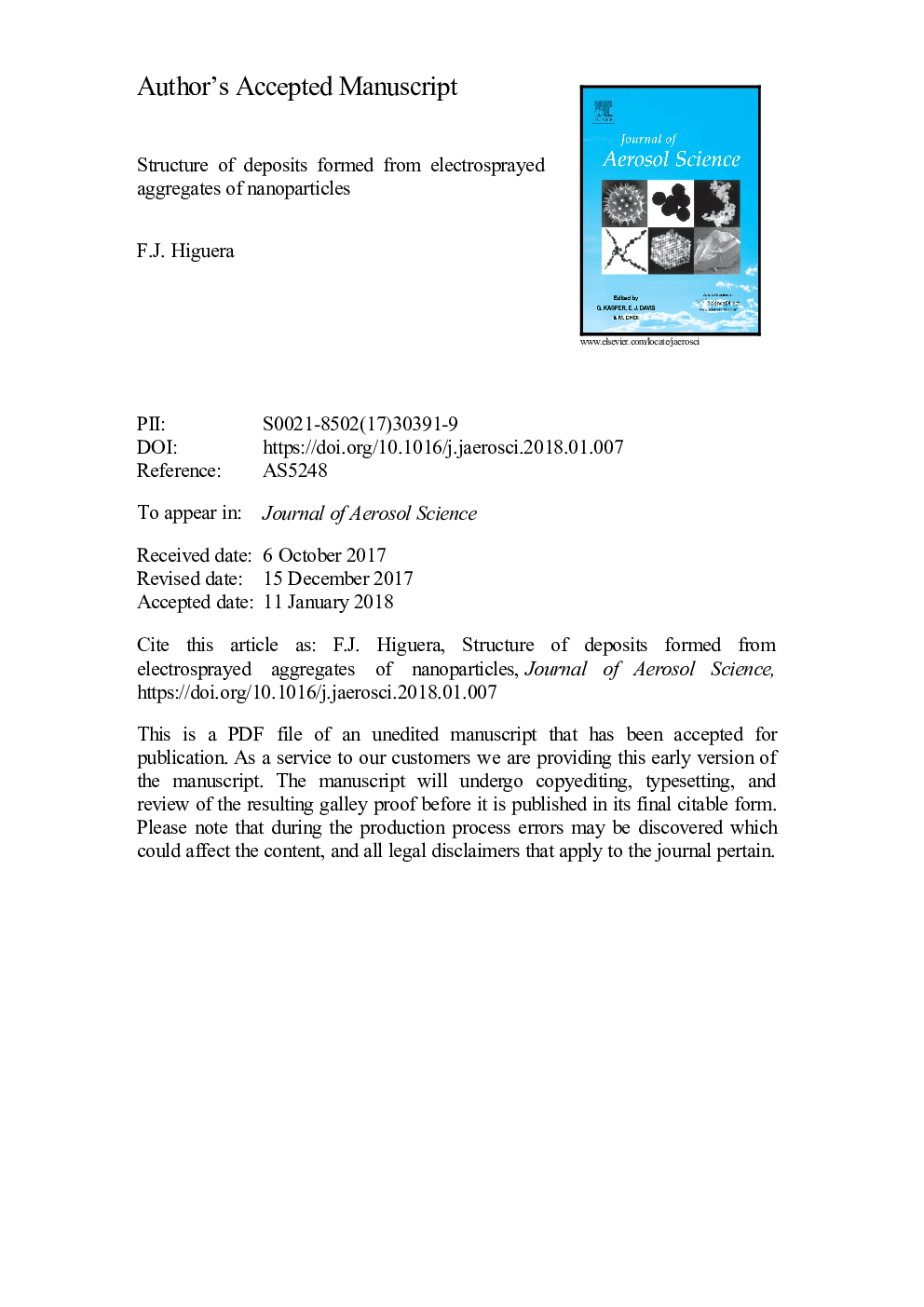| کد مقاله | کد نشریه | سال انتشار | مقاله انگلیسی | نسخه تمام متن |
|---|---|---|---|---|
| 8865283 | 1620705 | 2018 | 32 صفحه PDF | دانلود رایگان |
عنوان انگلیسی مقاله ISI
Structure of deposits formed from electrosprayed aggregates of nanoparticles
ترجمه فارسی عنوان
ساختار رسوبات تشکیل شده از ترکیبات الکتروشیمیایی نانوذرات
دانلود مقاله + سفارش ترجمه
دانلود مقاله ISI انگلیسی
رایگان برای ایرانیان
کلمات کلیدی
الکترو اسپری، ترکیبات نانوذرات، رسوبات گرانول،
موضوعات مرتبط
مهندسی و علوم پایه
علوم زمین و سیارات
علم هواشناسی
چکیده انگلیسی
An analysis is presented of the deposition on a collector electrode of electrically charged aggregates generated by electrospray atomization of a suspension of nanoparticles and subsequent evaporation of the carrier liquid. The aggregates are driven towards the collector by an applied electric field and are further attracted by their images in the deposit. Owing to the high electric charge of the aggregates, the image field overcomes the applied field at a distance from the deposit large compared to the size of the aggregates. A linear analysis and Monte Carlo simulations of the deposition process are carried out using an approximate representation of the image field in terms of a point charge and surface dipoles, which is intended to account for large scale features of the deposit only. Numerical results for a deposit of high electrical conductivity display a characteristic surface structure made of islands separated by deep crevices, which resembles the structure found by Tang and Gomez [Aerosol Sci. Technol. 51, 2017] in their recent experiments with electrosprayed suspensions of TiO2 nanoparticles. A scaling analysis predicts that the size of the islands increases as the power 3/4 of the size of the aggregates and decreases as the power â1/2 of the applied electric field. The numerical simulations overpredict the width of the crevices and the porosity of the deposit for small values of the aggregate size or the applied field, probably because the simplified representation of the image forces cannot account for small scale effects which are relevant at the edges of the crevices. A reduced electrical conductivity of the deposit slows down the discharge of deposited aggregates and may destroy the surface structure.
ناشر
Database: Elsevier - ScienceDirect (ساینس دایرکت)
Journal: Journal of Aerosol Science - Volume 118, April 2018, Pages 45-58
Journal: Journal of Aerosol Science - Volume 118, April 2018, Pages 45-58
نویسندگان
F.J. Higuera,
